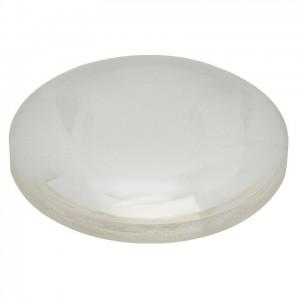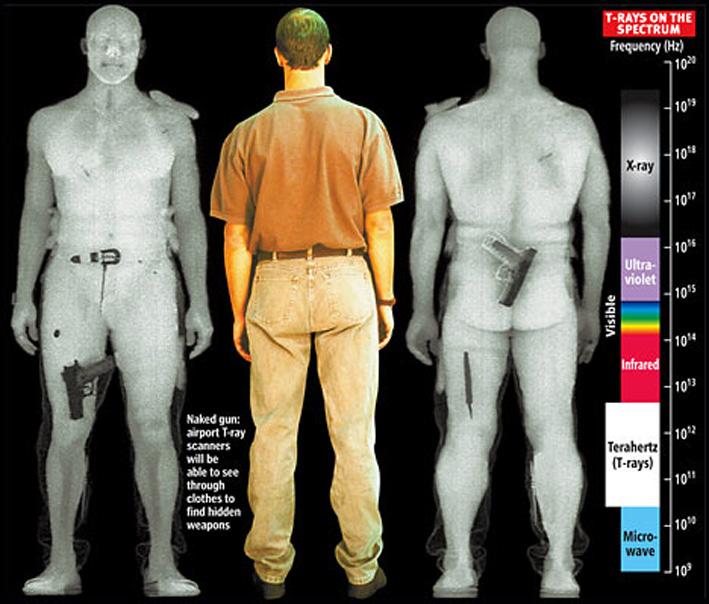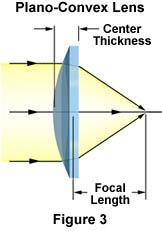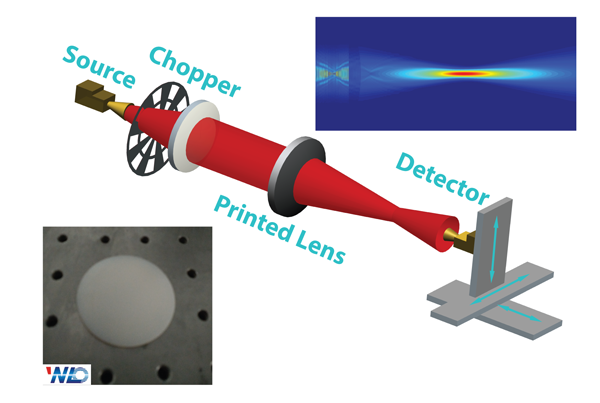 Terahertz Radiation (THz) is a range of radiation wavelengths that occupy a series of frequencies between microwaves and infrared light. This is called the terahertz gap, and while research into this band of electromagnetic radiation is still extremely new, it is already suggested that it could be used to improve security scanners, medical imaging, automated manufacturing, and even communications and high-speed internet.
Terahertz Radiation (THz) is a range of radiation wavelengths that occupy a series of frequencies between microwaves and infrared light. This is called the terahertz gap, and while research into this band of electromagnetic radiation is still extremely new, it is already suggested that it could be used to improve security scanners, medical imaging, automated manufacturing, and even communications and high-speed internet.
A group of Chinese researchers from Wuhan National Laboratory for Optoelectronics at the Huazhong University of Science and Technology have devised a method of 3D printing a lens that can focus THz radiation waves using photosensitive resin. THz waves can be focused to perform various specialized tasks depending on the geometry of the lens. The researchers have published a paper detailing their experiments into the new lens production and its applications.
 THz radiation can pass through materials like cardboard, clothing, and even low moisture body tissue. So if it is correctly focused, the radiation waves could create powerful security scanners that could search for weapons and materials with specific radiation wavelengths. Since materials like cardboard are virtually invisible to THz waves, similar applications could be used to inspect packages for bombs, or even be used in factories to verify box contents are complete and undamaged.
THz radiation can pass through materials like cardboard, clothing, and even low moisture body tissue. So if it is correctly focused, the radiation waves could create powerful security scanners that could search for weapons and materials with specific radiation wavelengths. Since materials like cardboard are virtually invisible to THz waves, similar applications could be used to inspect packages for bombs, or even be used in factories to verify box contents are complete and undamaged.
Under optimal conditions the waves can also transmit data almost 20 times faster than current wireless technology. Because THz waves are altered by high concentration water vapor, long range communication or data transfer is probably not a viable use; however, it would be ideal for high-speed communication in low moisture environments such as between satellites. It could also facilitate efficient short range communication between electronic devices in the home.
Medically THz waves can detect water content and variances of density in human tissue and be applied to new early epithelial cancer detection methods. And because THz radiation is not an ionizing radiation it will not damage tissue or alter DNA. THz could potentially be a replacement for x-ray technology in dental applications and provide clearer, more precise imaging of teeth and jaw bone anatomy.
 The standard glass lenses used in these types of applications are typically made with a computer controlled polishing mechanism that will create the desired lens curvature. The researchers used a clear photosensitive resin that worked just as well as traditionally manufactured glass lenses. The 3D printed lenses are significantly cheaper to manufacture and can be produced rapidly without any tooling as the desired curvature can be created as a 3D model. And because of the nature of photosensitive resin 3D printers and the requirements of focusing THz waves the printed lenses would require limited polishing to be effective.
The standard glass lenses used in these types of applications are typically made with a computer controlled polishing mechanism that will create the desired lens curvature. The researchers used a clear photosensitive resin that worked just as well as traditionally manufactured glass lenses. The 3D printed lenses are significantly cheaper to manufacture and can be produced rapidly without any tooling as the desired curvature can be created as a 3D model. And because of the nature of photosensitive resin 3D printers and the requirements of focusing THz waves the printed lenses would require limited polishing to be effective.
“As a novel technology, 3D printing is developing very quickly, which makes it possible to realize fabrication of THz components with complex geometric features,” explained Professor Jinsong Liu from the Wuhan National Laboratory for Optoelectronics.
 While technology that uses THz radiation is still in its infancy, the ability to quickly and inexpensively produce the required plano-convex lenses will provide a significant jump start to researchers looking to exploit it. The researchers from Wuhan National Laboratory have already tested several of their 3D printed lenses and found them to be comparable to their traditionally manufactured counterparts. Additionally, because 3D printing will allow for virtually any imagined geometry regardless of the complexity, there are more wavelengths than ever available for experimentation and research.
While technology that uses THz radiation is still in its infancy, the ability to quickly and inexpensively produce the required plano-convex lenses will provide a significant jump start to researchers looking to exploit it. The researchers from Wuhan National Laboratory have already tested several of their 3D printed lenses and found them to be comparable to their traditionally manufactured counterparts. Additionally, because 3D printing will allow for virtually any imagined geometry regardless of the complexity, there are more wavelengths than ever available for experimentation and research.
Now that the researchers have devised a way to rapidly produce lenses they will begin experimenting with the THz waves that are sent through them. They will measure its dispersion, reflection and power loss properties. They also plant to begin designing more complicated lens configurations to explore additional uses for the technology. You can discuss this exciting new advancement in 3D printing applications with us over in the 3D Printed Plano-Convex Lens forum at 3DPB.com.
Subscribe to Our Email Newsletter
Stay up-to-date on all the latest news from the 3D printing industry and receive information and offers from third party vendors.
You May Also Like
Profiling a Construction 3D Printing Pioneer: US Army Corps of Engineers’ Megan Kreiger
The world of construction 3D printing is still so new that the true experts can probably be counted on two hands. Among them is Megan Kreiger, Portfolio Manager of Additive...
US Army Corps of Engineers Taps Lincoln Electric & Eaton for Largest 3D Printed US Civil Works Part
The Soo Locks sit on the US-Canadian border, enabling maritime travel between Lake Superior and Lake Huron, from which ships can reach the rest of the Great Lakes. Crafts carrying...
Construction 3D Printing CEO Reflects on Being Female in Construction
Natalie Wadley, CEO of ChangeMaker3D, could hear the words of her daughter sitting next to her resounding in her head. “Mum, MUM, you’ve won!” Wadley had just won the prestigious...
1Print to Commercialize 3D Printed Coastal Resilience Solutions
1Print, a company that specializes in deploying additive construction (AC) for infrastructure projects, has entered an agreement with the University of Miami (UM) to accelerate commercialization of the SEAHIVE shoreline...






























